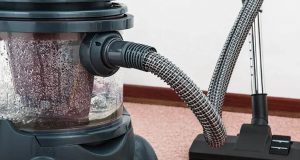Looking for Vacuum Leak on an Engine?
Dive into this blog to know more about how to find a vacuum leak on an engine. Now, before we start, let me first describe what I mean by an engine? An engine is any set of moving mechanical parts which convert power into motion. The power can be from any source; like, burning the gasoline in the engine, fast winds, water stored at a height etc. In this article, I will be writing about petrol engines only. The kind, which runs on gasoline in the tank and takes air from the atmosphere, either by natural induction or forced induction. The air and gas mix in the cylinders in the presence of an electric spark to generate power, which, in turn is converted to mechanical energy via flywheel.
Your First New Car
When you first buy a car from a dealership and shake hands of the salesperson while receiving the keys, you find yourself smiling all the way to your garage. And that smile remains on your face for quite some time. While commuting back and forth to work, grocery shopping, cruising in the middle of nowhere or just idling at a red light.
Some time passes by and you start to feel, your car is not the same as it used to be. Something amiss. Mileage has gone down. Cooling is not optimal. Treads have worn. And so on.
Start of Problems
Part of the problem lies in gradual wear and tear of hoses. Now, hoses play an important part in connecting various parts of the engine together via holding liquid or gas in them. And it is inevitable that at some point in the life of your car, those hoses would give in and start leaking. Meaning, they won’t be able to fully transmit the fluid to their designated place from their point of origin within the engine. And, that’s trouble.
Now, knowing that a hose or multiple hoses would leak after some time is no brainer. What most drivers are unaware of are the tools and techniques to find a leakage in the system of hoses comprising the engine.
Thankfully. There are Ways to Locate the Leakage
Now, the people who are into making engines, they know all the stuff related to engine. And they are in a very good habit of sharing notes with each other and with the general public. And, I am here to share with you, dear reader, how you can find vacuum leak on an engine.
But, What exactly is a Leakage?
Good question. You see, petrol engines take petrol from the tank of the car and air from the atmosphere via an induction system. Now, whenever air enters the system of the pistons anywhere other than the induction system,it is called a leakage. Easy.
A Diagram to the Rescue
Under the hood of your car, you will find a vacuum system diagram. This diagram lets you know the layout of all the hoses ensuring the system is vacuum sealed. Incase, you do not find the diagram of the vacuum system there, you can always find a copy of it in either your car manual or just by a quick search on google.
Getting Down to It
Now that you have located the vacuum system diagram, go through it and just locate the parts shown in the diagram. It would give a good idea of the connections. Next up, you perform a visual inspection of all the hoses making the vacuum system of the car. In case, you find a visible tear at any point along the length of the hose, congratulate yourself for finding the vacuum leakage on your engine.
But, sometimes, you may not get so lucky. Enters the vacuum tester gauge. Now this gauge has two tubes attached to it. It is connected to the part of the engine where you think there might be a chance of vacuum leakage, pump it up and observe for some time. If the pressure holds, you can whiteout that part of the system from your culprit list and move on to the next and so forth.
Now, before you have exhausted all the subparts of the system, you will find the pressure, not holding up in any of those systems. And, that is where the leakage is.
You may not have the fancy tool of testing the vacuum leakage. Worry not. A simple soap solution can do the trick. You create a thick foamy solution and use a sponge to place it on hoses or parts of it, where you think has the highest chance of leakage. A presence of small bubbles which do not stop coming out from the hose underneath the soap solution indicates the presence of the leakage.
Leakage has been Spotted. What now?
Well, half of the work is done here. As you know, solving any problem requires knowledge of the problem and by following the previous steps, you have ensured the knowledge of the problem. The other half that remains is solving the problem now.
Broken hoses and tubes are an easy fix. They cost nothing and can be easily replaced with new ones. But, if you find yourself looking at soap bubbles coming out of the intake manifold and gasket, it is going to put a little dent on your pocket.
Fixing it Only Goes so Far
You may have found the leakage on a sophisticated part of the engine which is not just hose and tube. You may think, you can fix the problem on your own. But, I would suggest taking your car to an expert and allowing him to work the problem. Sure, it will cost extra in the labor, but the peace of mind you will get knowing the problem has been adequately dealt with has no price tag to it. Now, does it?
Final Thoughts
An engine works best when all the parts of the system work in harmony with each other and maintaining the pressure inside the engine system is of utmost importance to ensure smooth running of the engine, giving you the best of the performance, year after year after that first handshake with the salesman.




